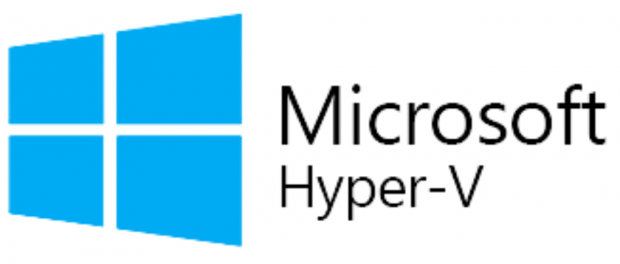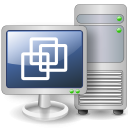FileWave Version 15.2.0 (Unsupported)
These downloads are provided for the purposes of migrations and should not continue to be used in production. You should upgrade to either the most recent release or the one prior. They can always be found here: Supported FileWave Versions
The FileWave endpoint management suite allows you to manage your devices wherever they are, wherever you are, whatever they are, and all in one platform!
Our goal in the 15.2 release is to complete iOS 17, iPadOS 17 and tvOS 17, together with macOS Sonoma (14).
FileWave 15.2 also introduces properties support for MSI installers.
FileWave 15.2 is available on both CentOS 7.9 and Debian 12.2, in order to facilitate transition to Debian distribution as a replacement for CentOS.
FileWave Official Version Support
FileWave development teams officially support two major versions at any time, N and N-1. For example, If we assume that the most recent version of FileWave is 15.1.x, then we will officially support versions 15.1.x and 15.0.x. Releases for major versions of FileWave occur roughly every quarter.
What does "officially support" mean? Officially supporting these versions means that we will investigate bug reports in these versions and patch issues that are significant. We will not produce patches for earlier versions than N-1, as this means allocating development resources to problems that are already potentially resolved instead of investing those resources into furthering the product. In short, if an issue is found in a version earlier than the officially supported versions, then remediation for the issue will be in the form of an application upgrade, or a patch to that more recent version.
This does not mean that you can't contact our support teams about an earlier version. They will, to the best of their ability, help you with older versions of the software but they will stop short of escalating tickets to our development teams and will likely recommend an upgrade so that you are getting the latest features and bug fixes.
Your existing FileWave Server must be version 13.3.1 or higher before you can upgrade to FileWave 14.7.2 and then from 14.7.2 you can upgrade to 15.2.0. The minimum memory requirement for FileWave 14+ is 8GB.
Compatibility
A Note on Compatibility
A note on the Compatibility charts: There are several states of compatibility for FileWave clients:
- "Compatible" (the first table) indicates that we have run QA regression tests against these operating system versions, and they are fully supported
- Not being on the Compatibility chart (such as macOS 12) does not mean that platform is not supported...it just means we did not actively test against it, but we do expect it to function
- Support of any issues experienced specifically on these platforms would be considered on a case-by-case basis (but these cases are exceedingly rare)
- "Legacy" versions mean that we don't test, but we do provide a retro-version of a client so that the device can still report in
- There is NO support for these platforms beyond the availability of the older client, and in almost all cases these are for OSes that are no longer supported by the developer in question
- Lastly, items do fall out of support, such as Windows XP and probably soon the older Android APK client as examples, but we always include these items in our release notes
An additional note on third-party software inclusion, such as TeamViewer:
- Partnerships we have with third party providers have their own set of system requirements for those released applications. We test against their most recent versions, and support of those applications is limited to third-party vendor specifications.
FileWave Server Platform Support
- macOS 13, 14 (Intel and Apple Silicon)
- Linux CentOS 7.9 x86_64
- Debian 12.2 x86_64 (Note that any Debian 12.x is expected to work, and applying security updates may move you to a higher version.)
Expected to work
- macOS 11, 12 (Intel and Apple Silicon)
FileWave Clients Platform Support
- macOS 13, 14 (Intel and Apple Silicon)
- Windows 10 (Ent/Pro 21H1 and above), 11 (Ent/Pro 21H2 and above)
Expected to work
- macOS 11, 12 (Intel and Apple Silicon)
Legacy
- macOS 10.11 → Legacy Version 13.1.5
- macOS 10.12 → Legacy Version 14.0.2
- macOS 10.13 → Legacy Version 14.5.4
- macOS 10.14 → Legacy Version 14.8.0
- macOS 10.15 → Legacy Version 15.0.1
FileWave Mobile Clients Platform Support
- iOS 16.1, 17
- iPadOS 16, 17
- tvOS 16, 17
- Android 13, 14 (EMM Client)
- Chromebook
Expected to work
- iOS 14, 15
- iPadOS 14, 15
- tvOS 14, 15
- Android 8 to 12 (EMM)
Legacy
- iOS 13 → Legacy Version 15.0.1
- iOS 10, 11, 12 → Legacy Version 13.1.5
FileWave Central (Native) Platform Support
- macOS 13, 14 (Intel and Apple Silicon)
- Windows 10 (Ent/Pro 21H1 and above), 11 (Ent/Pro 21H2 and above)
Expected to work
- macOS 11, 12 (Intel and Apple Silicon)
FileWave Booster Platform Support
- macOS 13, 14 (Intel and Apple Silicon)
- Windows 10 (Ent/Pro 21H1 and above), 11 (Ent/Pro 21H2 and above)
- Linux CentOS 7.9 x86_64
- Debian 12.2 x86_64 (Note that any Debian 12.x is expected to work, and applying security updates may move you to a higher version.)
FileWave Imaging Virtual Server Platform Support
The FileWave Imaging Virtual Server (IVS) is a special appliance that provides imaging support for Windows 10 and 11 UEFI and non-UEFI devices.
The IVS appliance is CentOS 7.9 based and can be run on:
- VMWare VSphere ESX installations
- VMWare Fusion
- VMWare Player and Workstation
- Virtual Box
Historically the imaging appliance also supported macOS imaging, but the process for imaging Macs has changed from macOS 10.13.
Note that a Debian version of IVS will be coming soon.
Features and Updates in this Release
FileWave Management Suite
FileWave Central User Interface has been refreshed ; FileWave Central is adopting FileWave Anywhere more modern look and feel. We hope you’ll love as much as we do the new FileWave Central !
Apple-Specific Changes
Support for macOS Sonoma (macOS 14):
Testing macOS 14, we found that some changes are required to properly restart FileWave Desktop agent (fwcld) after upgrade. These changes have been added to version 15.1.
This means that:
* It is recommended to upgrade macOS clients to FileWave 15.1 prior to upgrade to macOS 14 ;
* As the changes are related to permissions and are solved by automatically deploying a TCC profile, it is recommended to MDM-enroll macOS devices. This issue can be worked around by making upgrade fileset a reboot fileset.
FileVault 2 enforcement:
It is now possible to enforce Full Disk Encryption (FileVault 2) at enrollment time to increase security in your organization.
Return to Service (iOS / iPadOS 17): Learn More...
Parameterized WiFi profiles are now support with Return To Service.
Profile is delivered to the device at the time EraseDevice command is issued, and parameterization is done by FileWave server ; this means that parameterization happens at the time the command is sent to the device, and uses current values, including user-based values.
As WiFi profile is required prior to the enrollment, it can't use new enrollment credentials for parameterization.
New profiles or profile modifications:
- Managed Domains: new setting to configure urls to relax cross-site tracking prevention
- Dock: new settings to configure persistent items in the dock, and enforce settings like Auto-Hide or Show-Indicator, as well as new option for “Dock Fixup Override”.
- Security & Privacy : new “App Data” System Policy to pre-approve apps to access other app’s data (TCC)
- VPN Profile :
- Extend DNS options with encryption options
- Support for Transparent Proxy for Cisco AnyConnect, Cisco AnyConnect Legacy, Juniper SSL, F5 SSL, SonicWALL Mobile Connect, Aruba VIA
- new options to exclude Cellular Services or APNS
- Network Relays can now be configured using corresponding profiles
- Extensible Singled Sign On profile extended with Platform SSO options
- Network Profile : New setting to configure TLS Trusted Certificates, settings to specify AD or OD credentials, HESSID
Network Relays:
-
Applications can be configure to automatically use Network Relays as defined in the newly supported Network Relays profile
Shared iPads:
-
Passcode policy and Auto Lock time can now be configured for Shared iPads ; these settings are deployed using Command Policy profile.
VPP API : “v2” is now enabled by default (15.1)
VPP v2 API is not compatible with legacy VPP tokens (created before Apple School or Business Manager but with legacy vpp.itunes.apple.com service). Transferring licenses to Location-based token is highly recommended.
Windows-Specific Changes
MSI properties:
It is now possible to specify MSI properties to be applied during installation and, for installers supporting it, during uninstallation.
Default script:
Default script type is now PowerShell instead of Python (Central).
FileWave Imaging (IVS)
FileWave Networking Imaging 15.1.x brings compatibility with FileWave 15.2.x.
- PXE Kernel: 6.5.5
- Buildroot: 2023.08.01
Kiosk 2.0 for iOS (Technical Preview)
The transition from version 1.0 to version 2.0 of our app signifies a major leap forward in terms of user experience and visual appeal, much like the transformation seen when comparing the Android Play Store and the App Store. In this upgrade, the primary focus has been on completely revamping the user interface (UI) to provide a sleek, modern, and highly intuitive platform that caters to our users' evolving expectations.
Version 1.0 laid the foundation for the app's functionality and introduced users to a diverse array of features and content. However, user feedback and industry trends have illuminated the need for a more sophisticated and streamlined UI that aligns with contemporary design principles and enhances the overall user journey.
With version 2.0, the app undergoes a stunning visual makeover, drawing inspiration from the aesthetic excellence of both the Android Play Store and the App Store:
-
Unified Design Paradigm: Our new UI design unifies elements from both the Android Play Store and the App Store, creating a harmonious blend of familiarity and innovation. This design consistency ensures that users across various platforms feel comfortable while navigating the app.
-
Intuitive Navigation: Building on the success of version 1.0, version 2.0 introduces a reimagined navigation system. Users can effortlessly explore and discover content thanks to intuitive menus, recognizable icons, and seamless navigation flows, akin to the ease of navigation in both app marketplaces.
-
Visual Delight: The new UI is not just about functionality; it's a visual treat. Engaging animations, subtle transitions, and tastefully curated visuals combine to make every interaction with the app a delightful experience, echoing the immersive nature of the Android Play Store and the App Store.
-
Enhanced Customization: Version 2.0 introduces enhanced customization options, allowing users to personalize their interface just as they would within the Android Play Store and the App Store. Users can arrange and prioritize content according to their preferences, granting them a sense of ownership over their app experience.
-
Responsive Design: Much like the Android Play Store and the App Store's responsiveness across devices, our app now adapts seamlessly to various screen sizes and orientations. This ensures a consistent and optimized experience whether users are browsing on smartphones, tablets, or desktops.
By transitioning from version 1.0 to version 2.0 with a UI overhaul reminiscent of the Android Play Store and the App Store, our app solidifies its commitment to delivering an unparalleled user experience. This transformation isn't just about aesthetics; it's a testament to our dedication to meeting the evolving needs of our users in an engaging, intuitive, and visually striking manner. As we bridge the gap between the old and the new, version 2.0 sets the stage for a future where our app continues to evolve in tandem with user expectations and industry trends.
Kiosk 2.0 (Technical Preview) Enterprise app can be downloaded here : https://fwdl.filewave.com/15.2.0/App_Portal_Beta_15.2.0.ipa
Decommissioned Features
The following features have been removed from FileWave 15.2.0 :
- Android device management prior to Android EMM (using APKs, etc)
- Reason: Android EMM is the replacement for the much older method of managing Android devices
Changes and Fixes in 15.2.0
Changes and Fixes in 15.2.0
3rd party opensource components have been upgraded. Most relevant, but not only:
- OpenSSL 3.0.12
- Apache 2.4.58
- Postgres 12.16
- Python 3.10.13
- Qt 5.15.15
- ZLib 1.3
- Various library upgrades for bug and security issue fixes
Bug fixes:
- FWRD-982 Fixed an issue where fileset status could incorrectly be "Deleted" when changing deployed revision
- FWRD-1805 Fixed category for Command Policy Payload (Central Admin)
- FWRD-2101 Made sure Custom Field internal name can't end with underscore
- FWRD-2342 Fixed an issue where UseComputerNameForComputerRecordName key would incorrectly be added to Login Window Profile (Central Admin)
- FWRD-3102 Fixed an issue where it would not be possible to remove a fileset being a dependency of another fileset
- FWRD-3510 Fixed an issue where RSR updates would not be visible for macOS
- FWRD-3551 Fixed various issues related to dialogs Z-Order
- FWRD-3643 Fixed an issue where main window would come foreground after closing client monitor from client info dialog
- FWRD-3742 Fixed an issue where search would not work properly for scheduled report queries
- FWRD-3828 Fixed inconsistent button focus in Central Preferences dialog
- FWRD-4011 Fixed incorrectly formatted log entry related to smart group evaluation in fwxadmin.log
- FWRD-4442 Fixed Payload Description behaviour in FileWave Anywhere to match FileWave Central.
- FWRD-4776 Fixed an issue where signing out of FileWave would prevent from login into Grafana Dashboard
- FWRD-11270 Fixed an issue where global Content-Filter or DNS proxy profiles would not be applied (only per-app versions)
- FWRD-11340 Fixed an issue where Setup Assistant section in DEP Profile dialog would not show all options
- FWRD-11343 Fixed an issue where inactive text contrast would be too low (FileWave Central)
- FWRD-11353 Fixed Passcode Lock Grace Period field for Shared iPad Command Policy (FileWave Central)
- FWRD-11365 Central Admin windows too small for Default Scale / Resolution (1440x900)
- FWRD-11387 Fixed an issue where model update decision when two filesets for the same iOS application are associated via Fileset group to the same device would not be consistent
- FWRD-11402 Fixed Passcode Lock Grace Period field for Shared iPad Command Policy (FileWave Anywhere)
- FWRD-11495 Fixed an issue where duplicating a profile created outside FileWave would prevent from updating the model
- FWRD-11583 Fixed an issue on macOS Sonoma where Client Assistant would not use the same device name as the one used during enrollment
- FWRD-11610 Reduced required database disk space for revoked certificates
- FWRD-11613 Fixed an issue where the ampersand symbol would not be displayed in Clients View or Fileset View
- FWRD-11615 Fixed an issue where clone icons would be too hard to identify
- FWRD-11625 Fixed an issue where association timing fields would be to narrow (Central Admin)
- FWRD-11638 Fixed an issue where ampersand characters would not always be displayed in tabs or column headers
- FWRD-11641 Fixed margin on default revision picker dialog
- FWRD-11670 Fixed an issue where revert model could prevent subsequent update model
- FWRD-11692 Fixed an issue where group clone icon would be missing (Central Admin)
- FWRD-11264 Fixed an issue where Central Admin side bar could not be made larger
- FWRD-11344 Fixed an issue where expand arrow and status indicator color become white and not visible properly for row selection in License Management view
Included Open Source Software
Click here for the extensive list of Open Source Software included in the FileWave products.
Upgrading Your Environment
macOS Downloads
macOS Installers DMG (md5: 4fd2cfa4eb141708ce511b346aa8085a)
macOS Upgrade Fileset (md5: 273da58d7f671b8992edad084dc69beb)
macOS Admin (md5: 1fbaf4ab193ae78d6bdf2e12ee07439f)
macOS Booster (md5: 0a41426a07d60d59360270b758176c24)
macOS Server (md5: 13dde953b67eb72407a03265a918054e)
macOS Client (md5: 46675cffe452215e8609867506f2d9c1)
There is a patch for VPP that is important to install on your FileWave Server. If you run FileWave Server on macOS you can apply the patch with the below commands in Terminal.app when opened on the server or by SSHing to the server. For other platforms these same commands are listed in the install instructions as well:
# Apply patches to get the VPP patch that was done after 15.2.0 was finished
sudo /usr/local/filewave/python/bin/python /usr/local/filewave/django/manage.pyc apply_patch
sudo /usr/local/bin/fwcontrol apache restart
# Flush the scheduler in FileWave
sudo /usr/local/filewave/python/bin/python /usr/local/filewave/django/manage.pyc flush_scheduler
sudo reboot
Windows Downloads

Windows Upgrade Fileset (md5: ad3c6c1a23bb02968f9cd2820ef2e9c8)
Windows Admin (md5: 42542116485175fee18caeb15f3ff49c)
Windows Booster (md5: 28086cf9336da0f08cb458a20242ef25)
Windows Client (md5: a03017b73683cce7c5bf271eb1a5dda5)
iOS Downloads
 This is a native app version of the traditional Web Clip kiosk/app portal that is sent to devices; it provides for a better end-user experience and is required for location information.
This is a native app version of the traditional Web Clip kiosk/app portal that is sent to devices; it provides for a better end-user experience and is required for location information.
iOS 12+ : FileWave Enterprise.ipa (md5: fad3d73e0509ff20372972b1ac4e9ff8)
Static CDN URL :
https://fwdl.filewave.com/15.2.0/filewave/App%20Portal%2015.2.0.ipa
Chrome Extension
 The FileWave Inventory extension for Chromebook has to be installed via the Google Admin Console for your domain. Please see Quickstart Guide for Chromebooks for detailed instructions
The FileWave Inventory extension for Chromebook has to be installed via the Google Admin Console for your domain. Please see Quickstart Guide for Chromebooks for detailed instructions
White Labeling the Chromebook Extension (md5: b35b1e0b6c728021ab88b9427291ed6a)
CentOS Linux Downloads
CentOS Linux Installers (md5: d8a8f2550735bba130030f8b49ea6e7a)
CentOS Linux Server (md5: 7e80216613d117f2f28a35666d997f47)
CentOS Linux Booster (md5: a0db0a5cb09aec0bec1dce78e2b6742f)
If when doing yum update or upgrade you get a note that no updates are available it may be that you block access to some countries. yum clean all can clear the cache so that the upgrades can happen.
Upgrading the FileWave Server
To install or upgrade the FileWave Server, use the following :
# login via ssh / root or put sudo at the start of each line
sudo yum update -y
sudo yum upgrade -y
sudo yum install -y --nogpgcheck https://fwdl.filewave.com/15.2.0/fwxserver-15.2.0-1.0.x86_64.rpm
# Apply patches to get the VPP patch that was done after 15.2.0 was finished
sudo /usr/local/filewave/python/bin/python /usr/local/filewave/django/manage.pyc apply_patch
sudo /usr/local/bin/fwcontrol apache restart
# Flush the scheduler
sudo /usr/local/filewave/python/bin/python /usr/local/filewave/django/manage.pyc flush_scheduler
sudo rebootUpgrading a Booster
To install or upgrade the FileWave Booster, use the following:
# login via ssh / root
sudo yum update -y
sudo yum upgrade -y
sudo yum install -y --nogpgcheck https://fwdl.filewave.com/15.2.0/fwbooster-15.2.0-1.0.x86_64.rpm
sudo rebootNote that you can upgrade boosters centrally using the Auto-Upgrade feature within the admin console. You can find out how to do that at this KB article.
Upgrading an Existing IVS
Most likely, your IVS is already at CentOS 7, and you can run the following to easily upgrade your existing IVS appliance:
# login via ssh / root
sudo yum update -y
sudo yum update -y filewave-IVS
sudo yum upgrade -y
sudo rebootIf you get a response to the above command that "no packages are marked for update", then you'll need to run the below just one time on this IVS:
# login via ssh / root
sudo yum update -y
sudo yum install -y filewave-IVS
sudo yum upgrade -y
sudo rebootIf the version of your IVS is still running on CentOS 6, the upgrade path requires replacing your current appliance as CentOS 6 is End of Life. Upgrade instructions are detailed here for this scenario : IVS Upgrade/Migration Options.
Debian Linux Downloads
Debian Linux Installers (md5: 5b0b3444c95340b455f70350f05a3c1d)
Debian Linux Server (md5: 93f12c9bb8545db3b40ff3a288e78823)
Debian Linux Booster (md5: 89be5ef39b3b780ba5c77b6bbe829013)
Upgrading the FileWave Server
To install or upgrade the FileWave Server, use the following :
# login via ssh as root or use sudo for every line below
# OS Upgrades:
sudo apt update -y
sudo apt upgrade -y
# Download and Install:
wget https://fwdl.filewave.com/15.2.0/fwxserver_15.2.0_amd64.deb
sudo dpkg -i ./fwxserver_15.2.0_amd64.deb
# If dependencies are not met then the below will install them allowing for the FW server to install:
sudo apt-get install -f
# Apply patches to get the VPP patch that was done after 15.2.0 was finished
sudo /usr/local/filewave/python/bin/python /usr/local/filewave/django/manage.pyc apply_patch
sudo /usr/local/bin/fwcontrol apache restart
# Flush the scheduler in FileWave
sudo /usr/local/filewave/python/bin/python /usr/local/filewave/django/manage.pyc flush_scheduler
sudo rebootUpgrading a Booster
To install or upgrade the FileWave Booster, use the following :
# login via ssh as root or use sudo for every line below
# OS Upgrades:
sudo apt update -y
sudo apt upgrade -y
# Download and Install:
wget https://fwdl.filewave.com/15.2.0/fwbooster_15.2.0_amd64.deb
sudo dpkg -i ./fwbooster_15.2.0_amd64.deb
# If dependencies are not met then the below will install them allowing for the FW server to install:
sudo apt-get install -f
sudo rebootPlease note that the IVS for Debian will be released soon. At that time the download page will be updated and you will be able to replace your CentOS based IVS with a Debian one.
Virtual Appliance Downloads
CentOS Linux:
VMware and VirtualBox (OVA) Server Appliance (md5: c27bee1a0f062b6fc3530d72bd5c1d96)
VMware and VirtualBox (OVA) Booster Appliance (md5: 74da6ac1163265a87748466d9d19dc68)
VMware and VirtualBox (OVA) Imaging Appliance (md5: 5a7d1512281de275e9a82c8916a11fb6)
Debian Linux: It is preferred that you use this for a new server or booster. IVS is coming soon.
VMware and VirtualBox (OVA) Server Appliance (md5: 32ffed46159fec2200afcf1877e1ad4b)
VMware and VirtualBox (OVA) Booster Appliance (md5: a5a9c2da28bfc83be947a6a021fb80f6)
There is a patch for VPP that is important to install on your FileWave Server that you can apply in a terminal session:
# Apply patches to get the VPP patch that was done after 15.2.0 was finished
sudo /usr/local/filewave/python/bin/python /usr/local/filewave/django/manage.pyc apply_patch
sudo /usr/local/bin/fwcontrol apache restart
# Flush the scheduler in FileWave
sudo /usr/local/filewave/python/bin/python /usr/local/filewave/django/manage.pyc flush_scheduler
sudo rebootFor more information about importing the appliances please see: Importing FileWave Appliances
Hyper-V Appliance Downloads
 CentOS Linux:
CentOS Linux:
Hyper-V (VHD) Server Appliance (md5: 3a2abef9410f1f327ccd78144c9f51d6)
Hyper-V (VHD) Booster Appliance (md5: 44bc6ff328c7773bf586abda596989a7)
Hyper-V (VHD) Imaging Appliance (md5: e6cc770040f9c82d4ca704253bfba156)
Debian Linux: It is preferred that you use this for a new server or booster. IVS is coming soon.
Hyper-V (VHD) Server Appliance (md5: 128687f2d74027222e75541412c2f9a5)
Hyper-V (VHD) Booster Appliance (md5: 96a3251057f1d7d5bdcbd1fb8a0a19ac)
There is a patch for VPP that is important to install on your FileWave Server that you can apply in a terminal session:
# Apply patches to get the VPP patch that was done after 15.2.0 was finished
sudo /usr/local/filewave/python/bin/python /usr/local/filewave/django/manage.pyc apply_patch
sudo /usr/local/bin/fwcontrol apache restart
# Flush the scheduler in FileWave
sudo /usr/local/filewave/python/bin/python /usr/local/filewave/django/manage.pyc flush_scheduler
sudo reboot



No comments to display
No comments to display